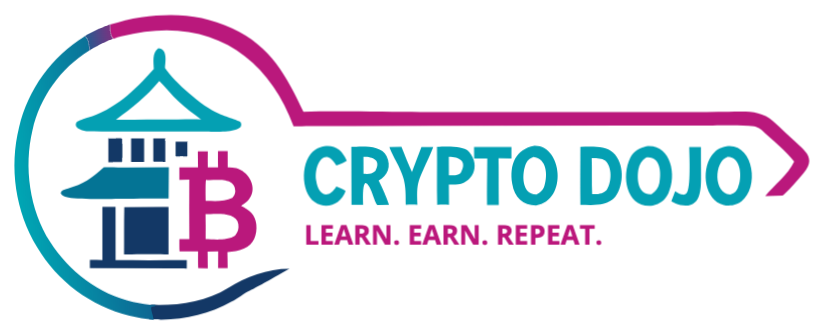Key Takeaways
Securing private keys and seed phrases is non-negotiable for any blockchain website that values user trust and digital asset protection. This article unpacks the essentials of crypto credential security, explains why technical SEO matters for blockchain platforms, and provides actionable steps to safeguard sensitive user data.
- Tighten user trust with robust private key protection: Implement on-site encryption, server-side key management best practices, and zero-knowledge architecture to ensure private keys are never exposed or stored insecurely on your blockchain site.
- Guard seed phrases with layered security strategies: Educate users on offline generation and secure backup methods (such as hardware wallets or air-gapped devices), and strongly recommend against ever entering seed phrases into any website, even your own.
- Move beyond definitions to practical security workflows: Make a clear distinction between private keys and seed phrases. Also provide in-depth guidance on secure credential handling, wallet recovery procedures, and built-in incident response directly within your website’s UX and user documentation.
- Integrate SEO with security for maximum credibility: Structure your security-related pages using targeted keywords, FAQs, and schema markup. This approach not only communicates your platform’s commitment to safety but also boosts your visibility for crypto security queries.
- Champion proactive wallet recovery and user support: Offer transparent, step-by-step wallet recovery instructions and avoid misleading UX patterns. Clarity in recovery documentation builds user loyalty, trust, and lowers costly support ticket volumes across your platform.
- Build digital asset protection into your brand positioning: By clearly demonstrating security-first technical infrastructure and user education, your platform becomes a trusted entry point for crypto newcomers, enhancing reputation and expanding your organic reach.
This roadmap guides blockchain website owners in bridging technical crypto security and modern SEO. It delivers both practical protection and increased search discoverability for their platforms. Next, let’s explore the foundational strategies that distinguish truly secure and reputable crypto platforms.
Introduction
Losing control of a private key or seed phrase is catastrophic. Not just for individual users, but also for any blockchain website aiming to build authority, credibility, and long-term growth. In the fast-evolving world of digital assets, crypto security is never simply an IT concern. It’s now the foundation for user trust, platform reputation, and future scalability.
Today, effective private key protection and robust seed phrase management go hand in hand with technical SEO. Every proactive step you take to secure credentials not only shields sensitive data, but also signals reliability to your users and search engines alike. In the following sections, we’ll break down actionable strategies that elevate your platform’s security posture, optimize search visibility, and empower your brand as a trusted gateway into the world of Web3.
Stay Sharp. Stay Ahead.
Join our Telegram Group for exclusive content, real insights,
engage with us and other members and get access to
insider updates, early news and top insights.
 Join the Group
Join the Group
Understanding Private Keys and Seed Phrases in Blockchain Security
Mastering blockchain security starts with a clear understanding of the two pillars of credential management: private keys and seed phrases. Let’s clarify their roles, functions, and best practices for technical implementation.
Private Key Fundamentals
Private keys form the cryptographic backbone of blockchain security. They are unique digital signatures generated as 256-bit numbers, typically represented as 64 hexadecimal characters, and mathematically linked to public wallet addresses on the blockchain. Control over a private key means control over its corresponding digital assets.
For blockchain websites, private keys must be handled with extreme care. Technical implementations should rely on trusted cryptographic libraries, such as those utilizing the secp256k1 elliptic curve used by major cryptocurrencies like Bitcoin. These libraries, paired with strong encryption at every storage and transit point, create a robust foundation for secure user authentication, transaction signing, and digital signature verification.
Seed Phrase Architecture
Seed phrases (also called recovery or mnemonic phrases) are human-readable representations of one or more private keys. Standardized through protocols like BIP-39, they typically consist of 12 or 24 carefully-chosen words from a list of 2048. This guarantees compatibility across wallets and services.
A single seed phrase allows the derivation of multiple private keys through hierarchical deterministic (HD) wallet architecture, streamlining wallet management and asset recovery. For blockchain platforms, proper seed phrase processes hinge on high-entropy generation and secure random number protocols to prevent attackers from predicting or reconstructing user credentials.
Understanding these concepts provides the groundwork for building systems that truly protect user autonomy and asset safety.
Implementation Security Measures
Translating these foundational concepts into operational security involves developing resilient storage, access, and management protocols that serve both platform and user interests.
Secure Storage Architecture
A comprehensive storage security approach relies on combining several layers of protection:
-
Encryption at Rest
-
Apply AES-256 encryption to all private keys and sensitive data stored at rest.
-
Store master keys within hardware security modules (HSMs) to prevent compromise.
-
Separate encryption/decryption operations from main application servers to minimize attack vectors.
-
Access Control Mechanisms
-
Deploy robust role-based access control (RBAC) so only authorized personnel can interact with sensitive credential data.
-
Require multi-factor authentication (MFA) for all privileged system access.
-
Maintain immutable audit logs of all key-related activities for transparency and incident investigation.
This security architecture creates strong barriers against both internal and external threats.
Server-Side Security Protocols
Beyond storage, comprehensive server security prevents exposure throughout the lifecycle of key usage:
- Memory Security: Immediately clear keys and related data from memory after processing. This mitigates exploitation through memory scraping or buffer overflows.
- Network Isolation: Use air-gapped or isolated systems for key generation and backup operations to minimize remote attack risks.
- Secure Key Transportation: Employ end-to-end encryption whenever moving encrypted keys, using protocols like TLS 1.3 or more advanced alternatives.
- Regular Security Audits: Schedule frequent penetration testing and code reviews to identify and remediate vulnerabilities before they can be exploited.
By implementing these protective layers, blockchain platforms elevate both asset protection and operational resilience.
Recovery Systems Implementation
Credential loss doesn’t have to mean loss of assets if you have robust backup and recovery protocols. Here’s how to structure your response:
Backup Strategy Development
A successful backup strategy involves both automated systems and clear policies:
-
Automated Backup Systems
-
Schedule regular, encrypted, and versioned backups to shield against single-point failures.
-
Distribute backup files securely across multiple, geographically distinct sites or devices, such as widely used cloud storage providers, offsite disks, or specialized hardware wallets.
-
Recovery Process Documentation
-
Develop clear, step-by-step guides for every credential recovery scenario.
-
Define and communicate recovery time objectives (RTOs) that set user expectations for accessing their funds after an incident.
These measures minimize data loss and streamline the recovery experience for all users.
Emergency Response Protocols
Preparedness is crucial when reacting to credential compromise:
-
Incident Response Plan
-
Specify every step to follow in the case of a suspected breach or private key exposure.
-
Clearly assign roles and communication protocols to ensure swift, coordinated response without confusion.
-
Communicate transparently with affected users to retain trust during high-stress situations.
-
Recovery Testing
-
Regularly conduct practice drills simulating loss or theft scenarios.
-
Log test results, identify weaknesses, and update plans as needed to ensure readiness.
Platforms that prepare systematically for emergencies emerge with their trust and reputation intact, even under pressure.
Stay Sharp. Stay Ahead.
Join our Telegram Group for exclusive content, real insights,
engage with us and other members and get access to
insider updates, early news and top insights.
 Join the Group
Join the Group
User Interface and Experience
Security measures only deliver real value if made accessible and understandable through user-centric design. How you present security workflows directly impacts adoption and compliance.
Security-Focused Design Patterns
A user interface focused on security combines guidance, clarity, and reassurance:
-
Key Management Interface
-
Establish clear information hierarchy for critical options such as backup, reset, and export.
-
Integrate step-by-step wizards and contextual tooltips guiding users through safe credential handling.
-
Use clear warnings and confirmation dialogs for high-risk actions (such as exporting private keys or deleting backups) to prevent accidental missteps.
-
Recovery Interface
-
Provide intuitive, user-friendly seed phrase input and verification mechanisms.
-
Employ progress indicators so users understand their recovery status at every stage.
-
Display clear, actionable error messages with suggested next steps in case of mistakes or invalid inputs.
By building security into every interaction, you empower users to protect themselves without feeling overwhelmed.
Monitoring and Maintenance
Protecting credential security is an ongoing process. Effective monitoring and regular updates are non-negotiable for lasting protection.
Security Monitoring Systems
Automated and manual monitoring tools deliver early warnings and ongoing performance insights:
-
Real-time Detection
-
Monitor for anomalies in key access, such as unexpected network locations or high-frequency attempts.
-
Track failed authentication events and respond automatically to suspicious patterns.
-
Configure instant alerts to security teams for timely intervention.
-
Performance Metrics
-
Assess the latency and throughput of sensitive key operations, helping catch unhealthy system behaviors.
-
Regularly monitor encryption and decryption task performance and backup completion rates to ensure continued operational health.
Regular Security Updates
Maintaining a hardened security perimeter requires systematic patch management and compliance checking:
-
Update Protocols
-
Schedule and document routine maintenance windows for applying security patches and feature updates.
-
Always first validate changes in a staging environment to avoid unplanned service disruptions.
-
Maintain accurate, up-to-date documentation for audit and troubleshooting purposes.
-
Compliance Checking
-
Carry out regular audits against relevant standards and cryptocurrency regulations, such as SOC 2, ISO/IEC 27001, or local compliance requirements.
-
Ensure all process changes are transparently reflected in your compliance and onboarding documents.
Consistent review, testing, and updating ensure that your key and phrase management systems remain ahead of emerging threats and in line with evolving best practices.
Expanding Beyond Blockchain: Security and SEO Integration in Multiple Industries
While these strategies are crucial for blockchain-focused platforms, secure credential management and SEO-driven communications are equally valuable across a range of sectors. In healthcare, protecting privileged access credentials to patient management systems ensures privacy and regulatory compliance. Financial services platforms use layered encryption and transparent recovery documentation to maintain customer trust and provide uninterrupted access to portfolios. In education, intuitive credential interfaces and compliance protocols protect student data and support adaptive learning environments. Legal and marketing services can employ comprehensive access controls and audit trails, safeguarding sensitive communications and analytics data. Retail, e-commerce, and environmental science applications all benefit from similar best practices, ensuring secure operations and building credibility through user-centered transparency.
Conclusion
Establishing robust private key and seed phrase management is essential for securing digital assets within any blockchain-enabled environment. It sets a standard that forward-thinking organizations in all sectors can follow. By adopting proven cryptography (like elliptic curve algorithms and BIP-39 standards), implementing layered encryption, enforcing access controls, and designing user interfaces that prioritize clarity and safety, businesses and individuals can dramatically reduce the chance of loss or breaches.
Moreover, by integrating clear recovery procedures, conducting ongoing monitoring, and demonstrating transparent, user-first support, your platform builds both immediate and lasting trust. This dual emphasis on security and education not only guards your users but also acts as a strategic differentiator in a competitive market.
Looking ahead, the organizations that lead will be those that blend technical resilience with transparent communication and proactive SEO. As attack surfaces and user expectations evolve, only a continuous commitment to security and clarity will empower users to truly take ownership of their digital assets. By adopting these best practices, you not only protect wallets and platforms but also inspire confidence and participation in the decentralized economy. This drives growth and innovation in the future of Web3.





Leave a Reply